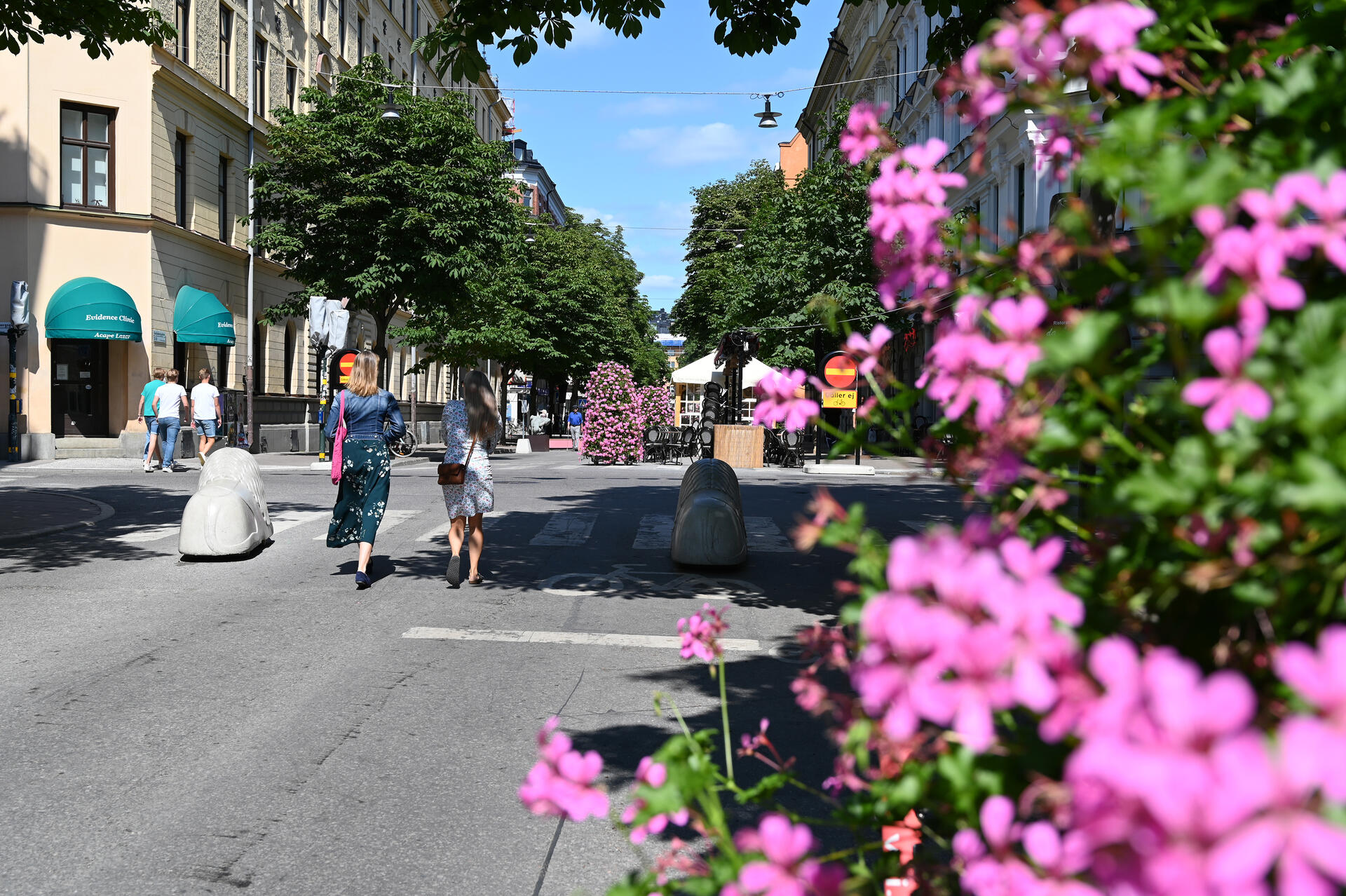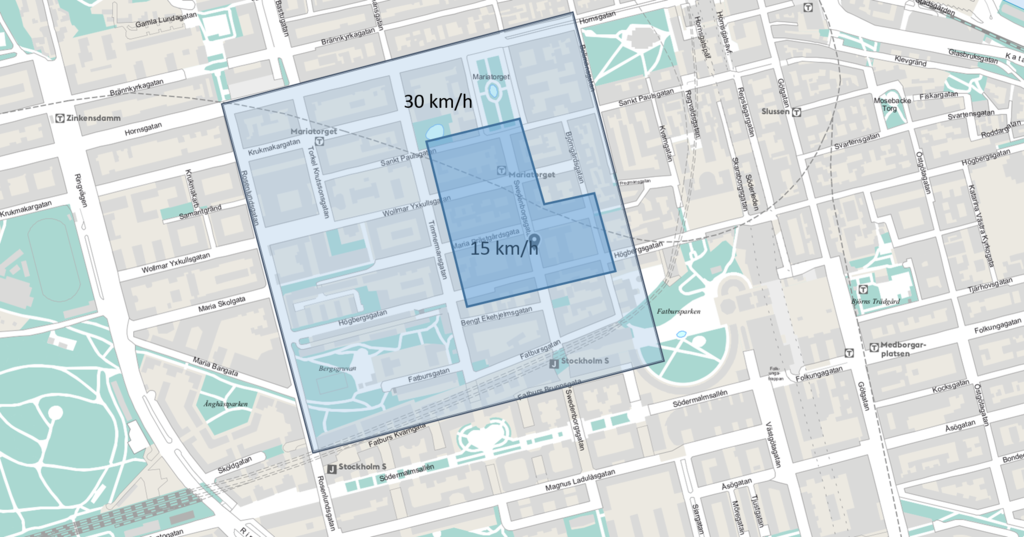Safe, secure & shared urban spaces

In the city centre, there are numerous interests that need to coexist on the city's streets. Within the pilot area, there are several schools and preschools, and at certain times, many children are on the streets while deliveries are being made to the businesses. The project's aim is to create a safer traffic environment for vulnerable road users through new solutions such as digital signage and dynamic speed regulation.
How will the test be executed?
The pilot area is located in the western part of Södermalm. The area is framed by Hornsgatan in the North, Rosenlundsgatan in the west, Fatbursgatan in the south, and Bellmangatan/Björngårdsgatan in the east.
The streets within the area are different in design and layout and have various rules and regulations. Therefore the challenges also vary within the area, depending on the street.
In the area, the project plans for the following actions to be tested:
- Streets on or within the light blue area are secured with geofencing to 30 km/h (regulated speed)
- To secure the pedestrian crossings along the pedestrian street Swedenborgsgatan, a larger area around the street will have a speed limit of 15 km/h when there are many pedestrians on the street or when there are many children in the area. This will be complemented with digital signs warning that there are many unprotected pedestrians in motion.
- Björngårdsskolan - 15 km/h at specific times, such as when the children start school and leave school. The number of passages at the school can be measured in advance to determine the time intervals during which the speed limit of 15 km/h should be applied. Additionally, digital warning signs for non-connected vehicles will be used to alert that there are many children in the area - and reduce speed.
- Södermalmsskolan - 15 km/h at specific times, such as when the children start school and when most people are leaving school. The number of passages at the school can be measured in advance to determine the time intervals during which the speed limit of 15 km/h should be applied. Additionally, digital warning signs for non-connected vehicles will be used to alert that there are many children in the area - and reduce speed.
A geofence solution is planned to be implemented to regulate the speed in various zones in the area around Swedenborgsgatan.
The pilot project aims to investigate whether the use of geofencing and digital signs can influence the behavior of drivers and transporters and improve the safety and security of pedestrians, especially children.

Background
The City of Stockholm is the heart of a growing region, and as the city expands, the competition for land use intensifies. In the city center, the situation will reach a critical point as the future road infrastructure will remain the same as today. In Stockholm, there is an ongoing development where the role of the streets needs to be reconsidered. The city's streets are not only for traffic but also a space for life and encounters.
The City of Stockholm is also actively working with the city's schools to increase children's sense of independence and security when traveling to and from school. This is done, among other things, by reducing speed, improving speed compliance, and redesigning the environment around schools.
This work involves increasing compliance with rules and regulations regarding speed limits but also creating a safe environment around the schools'.
A vibrant city with cafes, restaurants, shops, and activities makes it not only attractive for pedestrians but also entails a greater flow of goods and transportation. A situation with many deliveries and sometimes tight schedules creates a less attractive environment for pedestrians, especially for children who may find it challenging to understand the traffic situation.
With digital solutions, there are new opportunities and ways to use the existing infrastructure. The traffic environment can, for example, be made safer through better compliance without the need for physical barriers to be used to the same extent.
In the test area in Western Södermalm, there are many schools and preschools, a pedestrian street with cafes and shops, and two play streets. Many people, often children, move into the area. At the same time, there is a challenge in the traffic environment due to many deliveries within the area, and parents transport their children to and from school.
Who participates in the test?
Stockholms stad, CLOSER, Dagab, Edeva, Göteborgs stad, HAVI, KTH, Martin & Servera, Ramudden, Scania, Technolution, Viscando, Volvo Lastvagnar och VTI.
Do you want to know more about the test?

